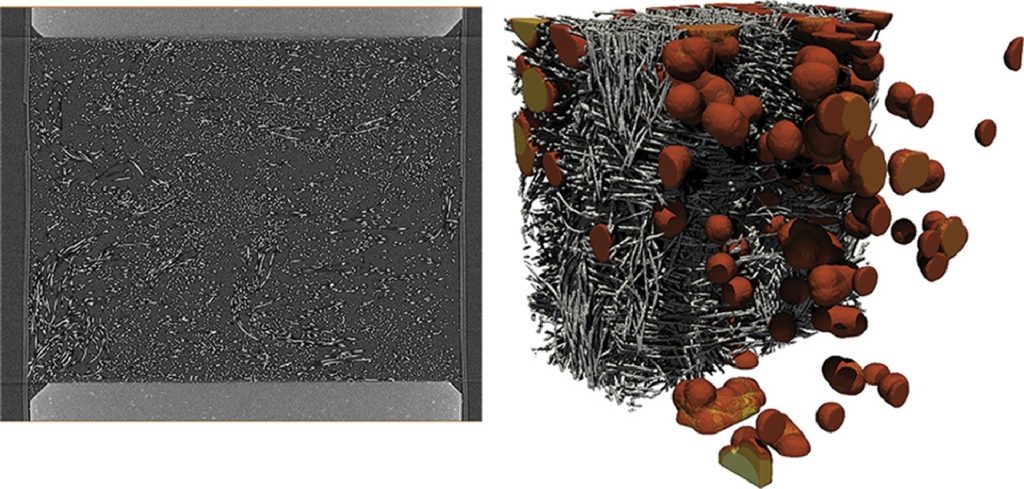Thermo Fisher Scientific › Electron Microscopy › Electron Microscopes › 3D Visualization, Analysis and EM Software › Use Case Gallery

Redox flow batteries offer a potential solution to an increase in renewable energy generation on the grid by offering long-term, large-scale storage and regulation of power. However, they are currently underutilised due to cost and performance issues, many of which are linked to the microstructure of the porous carbon electrodes used. Here, for the first time, we offer a detailed study of the in situ effects of compression on a commercially available carbon felt electrode. Visualisation of electrode structure using X-ray computed tomography shows the non-linear way that these materials compress and various metrics are used to elucidate the changes in porosity, pore size distribution and tortuosity factor under compressions from 0%–90%.
For Research Use Only. Not for use in diagnostic procedures.